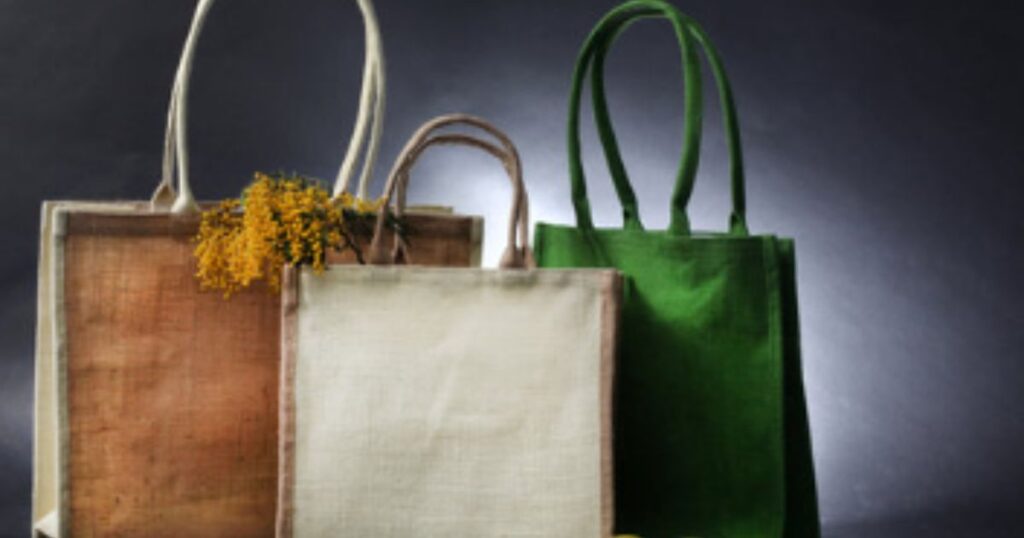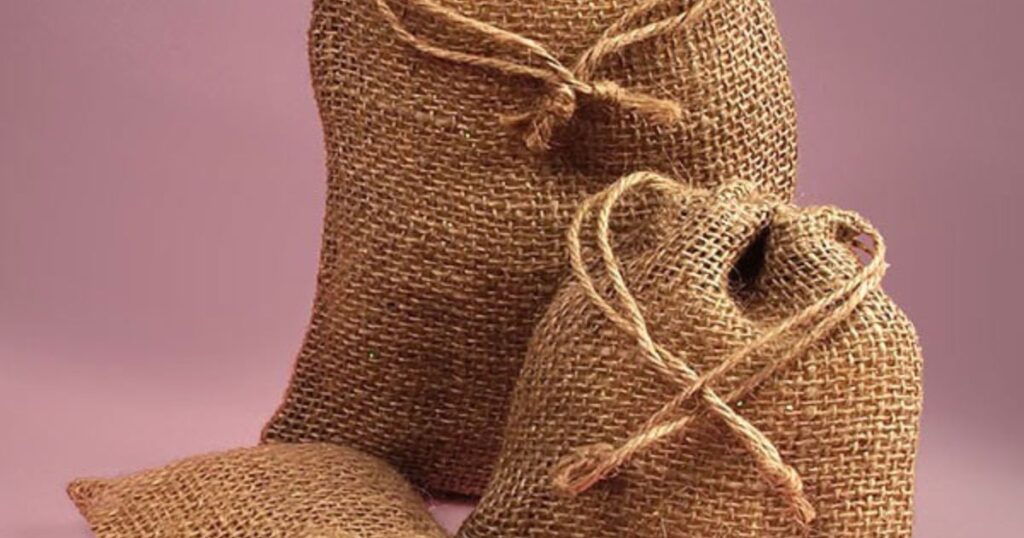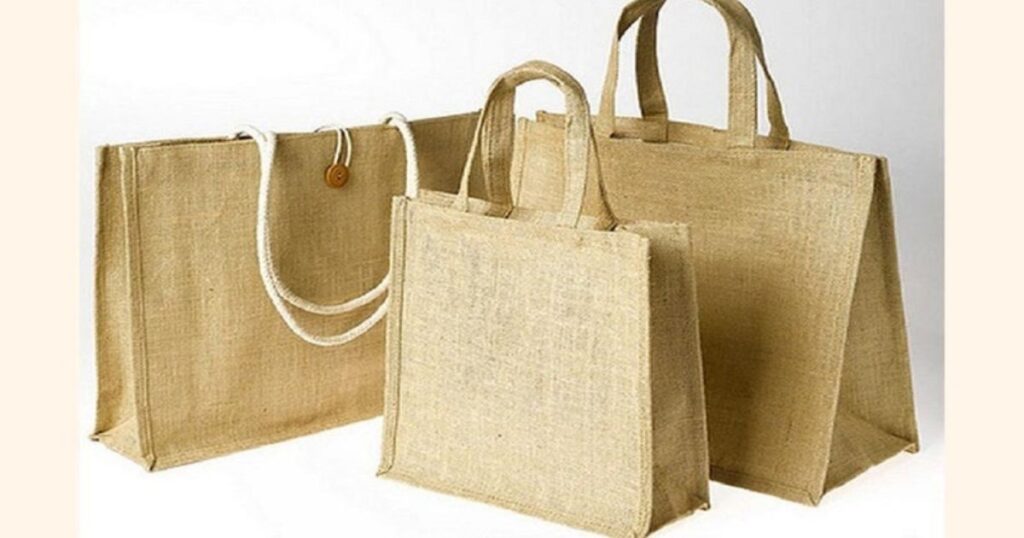In an era where environmental consciousness is more important than ever, individuals and industries are looking for ways to adopt eco-friendly practices. Among these, the demand for sustainable materials has surged, and jute bags have become a symbol of environmentally responsible living. Known for their durability, biodegradability, and versatility, jute bags offer a green alternative to plastic and synthetic bags. In this comprehensive blog post, we will explore everything you need to know about jute bags, from their production and uses to their environmental benefits and growing popularity in fashion and daily life.
What is Jute?
Natural fiber made from the plant is called jute. Primarily grown in tropical regions, particularly in Bangladesh and India. Known for its long, soft, and shiny fibers, jute is one of the most affordable and eco-friendly materials available. It is often used to make various products, including burlap, sacks, ropes, and textiles. Jute is biodegradable and compostable, making it an excellent alternative to synthetic fibers.
Cultivating jute requires minimal pesticides and fertilizers, contributing to its sustainability. Additionally, jute plays a significant role in producing countries’ economies, providing livelihoods for millions of farmers. With its versatility and environmental benefits, jute is gaining popularity in eco-conscious jute jute bag Top 5 Benefits of Using B2b A4 Paper in Your Office markets.
The Growing Demand for Sustainable Materials
The growing demand for sustainable materials reflects a significant shift in consumer preferences and industrial practices towards environmental responsibility. As awareness of climate change and resource depletion increases, businesses prioritize eco-friendly alternatives in their supply chains. Sustainable materials like recycled plastics, bamboo, and organic textiles reduce environmental impact and appeal to a more conscious consumer base.
This trend is evident across various industries, including fashion, construction, and packaging, where companies are innovating to meet sustainability goals. Furthermore, government regulations and incentives are pushing industries to adopt greener practices. The transition to sustainable materials fosters a circular economy and enhances brand loyalty as consumers increasingly support sustainable brands. Ultimately, this growing demand signals a transformative movement towards a more sustainable future.
Benefits of Jute Bags
Eco-Friendly
Jute bags are known for their remarkable strength and durability. Because of their substantial weight capacity, they are appropriate for toting heavy objects like books, groceries, and other stuff. Jute bags are an affordable substitute for single-use plastic bags because, with the right maintenance, they may survive for years.
Stylish and Versatile
Jute bags come in various designs, colors, and sizes, making them stylish accessories for any occasion. From simple tote bags to intricately designed handbags, jute can be customized to suit individual tastes and preferences. They appeal to many because they may be used for stylish everyday bags, beach outings, and shopping.
Jute has natural insulating properties, making it ideal for carrying perishable items. It helps maintain the temperature of the contents, which is particularly useful when transporting groceries. Jute bags can keep fruits and vegetables fresh longer, minimizing food The Art Of Gift Giving: A Deep Dive Into Gift Boxes waste.
Supporting Local Economies
The jute industry provides livelihoods for millions of farmers and workers in developing countries. By choosing jute bags, consumers support these communities and promote fair trade practices. This helps create a positive economic impact while also preserving traditional craftsmanship.
Different Types of Jute Bags
Jute bags are eco-friendly alternatives to plastic, available in various styles and sizes to suit different needs. Tote bags are popular for shopping, offering spacious interiors and sturdy handles. Drawstring bags are lightweight, convenient for gym use or casual outings, and easily cinched for security. Backpacks made from jute combine functionality with sustainability, perfect for students or travelers.
Lunch bags crafted from jute provide an insulated option for carrying meals while reducing waste. Cosmetic bags feature elegant designs, ideal for organizing personal items. Lastly, it allow businesses to promote their brand sustainably. Each type showcases jute’s versatility, making it a favored choice for environmentally conscious consumers.
Jute Tote Bags
Jute tote bags are popular for grocery shopping and everyday use. They come in various sizes and designs, often featuring sturdy handles for easy carrying. Tote bags can be personalized with prints or logos, making them an excellent choice for promotional purposes.
Jute Backpacks
Jute backpacks offer a unique blend of style and functionality. They are perfect for students and travelers seeking a sustainable alternative to synthetic backpacks. With spacious compartments and comfortable straps, jute backpacks are practical and environmentally bag jute-friendly.
Jute Handbags
Jute handbags are a great choice for those who prefer a more fashionable option. These bags can be designed in numerous styles, from casual to formal, making them suitable for any occasion. The natural texture of jute adds a unique touch to any outfit.
Jute Cosmetic Bags
Jute cosmetic bags are perfect for storing beauty products and toiletries. They are durable and easy to clean, making them a practical addition to any travel kit. With various designs available, these bags can be both functional and jute bags for shopping stylish.
The Environmental Impact of Jute Production
Jute production often hailed for its biodegradable nature, is significant in environmental sustainability. Grown primarily in tropical regions, jute requires minimal chemical inputs compared to synthetic fibers, reducing soil and water pollution. Its cultivation enhances soil fertility through nitrogen fixation, promoting healthier ecosystems. However, the environmental impact of jute production is of concern. Land conversion for jute farming can lead to deforestation and loss of biodiversity.
Additionally, intensive farming practices may result in soil degradation and water resource depletion. While less toxic than synthetic alternatives, jute processing can still produce waste and emissions if not managed properly. Overall, while jute offers ecological advantages, sustainable practices in cultivation and processing are essential to minimize its environmental footprint.
Sustainable Farming Practices
Jute cultivation is generally considered environmentally friendly. Jute plants require minimal chemical fertilizers and pesticides, promoting sustainable farming practices. Additionally, jute crops help improve soil fertility through crop rotation, reducing the need for synthetic fertilizers.
Low Water Consumption
Jute is a drought-resistant plant that requires less water than many other crops. This makes it an ideal choice for farmers in regions where water scarcity is a concern. Consumers can support crops that utilize resources more efficiently by opting for jute.Jute plants absorb carbon dioxide during their growth, contributing to a reduction in greenhouse gases. This carbon sequestration process helps combat climate change and promotes a healthier atmosphere.
Jute Bags vs. Other Alternatives
Jute bags are an eco-friendly alternative to plastic bags, gaining popularity for their durability and biodegradability. Unlike synthetic materials, jute is a natural fiber derived from the jute plant, making it sustainable and renewable. Jute bags are strong and reusable, often outlasting other options like cotton or polypropylene bags, which can require more energy to produce. While cotton bags are also biodegradable, their production is water-intensive.
Polypropylene bags are lightweight and durable but not biodegradable, contributing to environmental pollution. Jute bags balance functionality and environmental responsibility, making them an excellent choice for consumers seeking sustainable solutions. Overall, it represent a conscious choice in reducing plastic waste and promoting a greener planet.

Jute Bags vs. Cotton Bags
While cotton bags are also a sustainable alternative, they require significant water and land resources for cultivation. The environmental impact of cotton farming, particularly conventional practices, can be high. In contrast, jute farming has a lower environmental footprint, making jute bags a more sustainable choice.
Jute Bags vs. Plastic Bags
Plastic bags are notorious for their contribution to environmental pollution. They take hundreds of years to decompose and often end up in oceans and landfills, harming wildlife and ecosystems. Jute bags offer a biodegradable alternative that can significantly reduce plastic waste.
Jute Bags vs. Synthetic Bags
Synthetic bags, often made from polyester or nylon, are derived from petroleum, a non-renewable resource. The production of synthetic materials contributes to pollution and greenhouse gas emissions. Jute bags, made from natural fibers, present a more sustainable jute bag shopping option.
The Future of Jute Bags
The Future of Jute Bags” envisions a sustainable shift in consumer behavior as environmental awareness drives the demand for eco-friendly alternatives to plastic. Jute bags, known for their durability and biodegradability, are poised to become the preferred choice for conscious shoppers. Innovations in design will enhance their aesthetic appeal, making them trendy fashion statements while maintaining functionality.
The jute industry will likely embrace advanced production techniques emphasizing ethical sourcing and supporting local artisans. As global policies increasingly ban single-use plastics it will emerge as a symbol of sustainability, promoting a circular economy. Their versatility will extend beyond shopping, finding applications in packaging, home decor, and more, solidifying it as an essential part of a greener future.

Increasing Popularity
As more customers become conscious of how their decisions affect the environment, the demand for jute bags is expected to rise. Many retailers incorporate it into their product offerings, making them widely accessible. Jute’s versatility allows for endless design possibilities. As fashion trends evolve, designers increasingly experiment with jute, incorporating it into various styles and products. This innovation will likely attract a broader audience, further promoting the use of jute bags.
Government Initiatives
In many countries, governments are implementing policies to reduce plastic usage and promote sustainable alternatives. Jute is often highlighted as a key player in these initiatives, and its use in packaging and consumer goods is encouraged. As awareness of sustainability grows, educational campaigns are becoming crucial in promoting the benefits of it. Schools, organizations, and communities are working to inform the public about the advantages of choosing jute over plastic or synthetic materials.
Conclusion:
Jute purses are not merely in style; they represent a significant shift toward sustainability in consumer behavior. With their eco-friendly properties, durability, and stylish designs, it provide a practical solution for those looking to reduce their environmental impact. By choosing jute, consumers make a responsible choice for themselves, support local economies, and promote sustainable farming practices.
As we move forward in our journey toward a more sustainable future, embracing jute bags can be a simple yet impactful way to contribute to might be an easy yet effective approach to support the well-being of our planet. So, whether you’re shopping for groceries, heading to the beach, or looking for a fashionable handbag, consider switching to jute—a sustainable and stylish alternative.
FAQ:
What are Jute Bags?
Jute bags are eco-friendly, biodegradable bags made from natural jute fiber. Jute is a long, soft, shiny vegetable fiber that can be spun into strong threads, making it ideal for creating durable and sustainable bags.
Why are Jute Bags Considered Eco-friendly?
Jute is a natural, renewable resource that requires minimal fertilizers and pesticides for cultivation. It is biodegradable, which means it breaks down naturally without harming the environment. Additionally, jute farming helps reduce carbon emissions, making it a green alternative to plastic.
Are Jute Bags Durable?
Yes,it are known for their strength and durability. The tough, gritty texture of the fabric makes them great for everyday usage, shopping, or transporting heavier objects, and it also makes them resistant to wear and tear.
What Makes Jute More Sustainable Compared to Other Materials?
Jute is a fast-growing crop that absorbs large amounts of CO2 while producing oxygen. It is grown with little need for pesticides and fertilizers, making it less environmentally harmful. Unlike synthetic materials, jute is biodegradable, reducing plastic pollution and waste.
Are Jute Bags Good for Shopping?
Absolutely! it are sturdy enough to carry heavy groceries, books, or everyday essentials. Many it have reinforced handles and are large enough to hold many items, making them practical for shopping.

